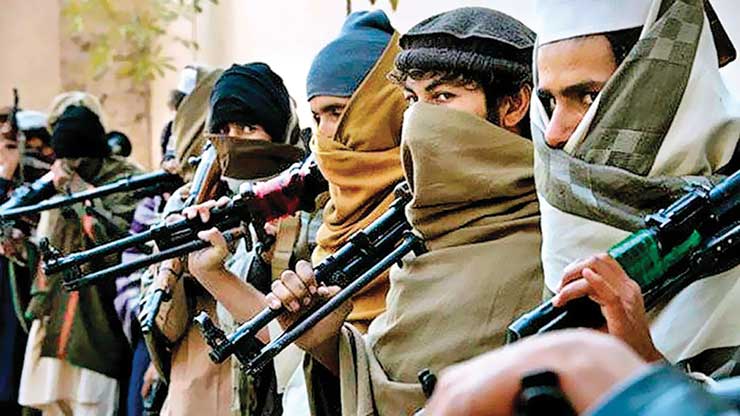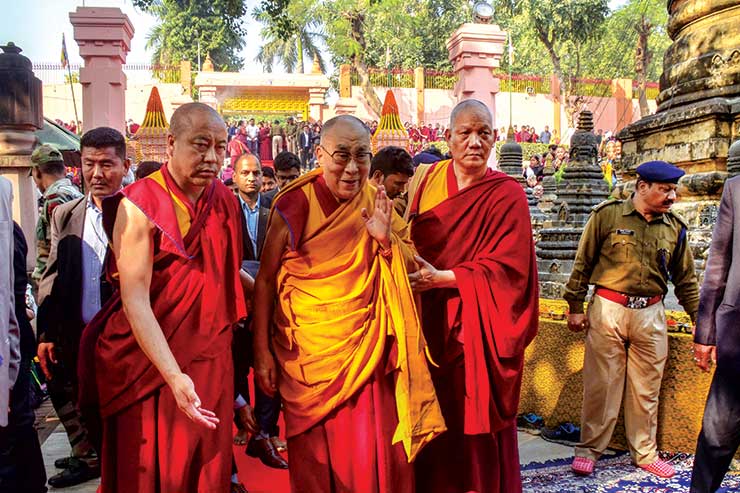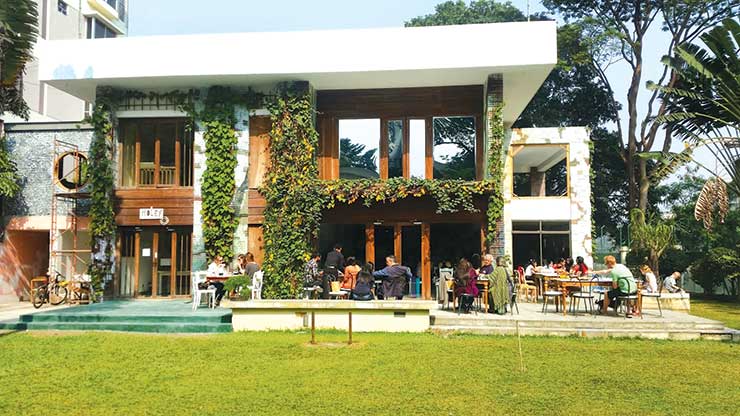
Since its formation in 1998, the Jamaat-ul-Mujahideen Bangladesh (JMB)— also known as Neo-JMB more recently—has been associated with some of the most brutal attacks in the country. Working alongside the Al-Qaeda-affiliated Harkat ul Jihad Islami—Bangladesh (HUJI-B), the group sought to establish an Islamic state through political process coupled with violence.
JMB was responsible for the synchronised bombings across 50 towns and cities in Bangladesh in August 2005 and the subsequent suicide attacks against government officials, judges, lawyers, and professors.
The attacks led to the arrest and execution of several senior JMB leaders, including its chief-in-command Sheikh Abdur Rahman. This coincided with multiple arrests of both HuJI-B and JMB rank-and-file members in the country forcing the terrorist group into a period of inactivity.
However, since the Shahbagh protests of 2013 in Bangladesh and the incursion of the Islamic State (IS) into the South Asian nation, JMB has continued to evolve and carry out attacks.
The group has also demonstrated its ability to conduct cross-border attacks in India—notably the Burdwan blasts in 2014. This article briefly explores the threat posed by JMB (or Neo-JMB) in India. Through spacio-temporal analysis, the article asserts that while the group has failed to carry out significant attacks since 2014, it still retains the ability to remain resilient and conduct operations, posing significant threat to the Indian security establishment.
JMB’s India Venture
A few days before the Burdwan blast in 2014, officials found smuggled pamphlets from Bangladesh being distributed secretly in West Bengal. These pamphlets talked of establishing a caliphate in Bangladesh that would eventually expand into India—especially in West Bengal and Assam.
Although JMB came into the limelight in India following the 2014 blast, its erstwhile leader—Sheikh Abdur Rehman—had confessed about the group’s presence in Murshidabad (West Bengal), near the India-Bangladesh border since 2001.
Furthermore, the group has also conducted recruitment operations in West Bengal since 2007. It has also relied on the porous Indo-Bangladesh border to smuggle drugs, weapons, materials for explosives, and people.
Following the Burdwan blast, the National Investigation Agency (NIA) of India uncovered a sprawling network of the group in the border regions tied with madrassas and mosques for recruitment and training in explosives and weapons.

According to the data on the SATP portal, as many as 200 members have since been arrested in India with 59 arrests made in Assam. With the advent of the Islamic State in South Asia, JMB largely shifted its modus operandi to synchronise with the IS objectives in the region. Furthermore, members of JMB have also worked closely with the IS affiliated Jund al-Tawheed wal Khilafah (JTK) in Bangladesh to carry out attacks on Shia Muslims, foreigners, and places of worship.
With increasing pressure from law enforcement, JMB splintered into multiple smaller groups like the Neo-JMB and the Islamic State in Bangladesh (ISB), whose members further worked together to plan and carry out operations.
Enter Neo-JMB
Following the attack on the Holey Artisan Bakery in Dhaka in 2016, members of Neo-JMB used the Indo-Bangladesh border to escape the ensuing crackdown by law enforcement.
With the advent of the Islamic State in South Asia, JMB largely shifted its modus operandi to synchronise with the IS objectives
Subsequently, the group was involved in the low-intensity blast in Bodh Gaya (Bihar) during the Dalai Lama’s visit in early 2018, which it claimed to carry out to avenge the violence against the Rohingyas in Myanmar. Currently, neo-JMB is active mostly in the northern part of West Bengal and Assam in India.
Since 2014, Neo-JMB’s predecessor, JMB, was actively recruiting, setting up bases in Northeast India. Arrests of JMB members the following year revealed that the group trained with militants associated with United Liberation Front of Asom—Independent (ULFA-I), National Socialist Council of Nagaland—Khaplang (NSCN-K), and Muslim United Liberation Tigers of Assam (MULTA).
Subsequently, arrest of several Neo-JMB members in April 2021 led to the discovery that the group had leveraged its predecessor’s fraternity with members of the aforementioned militant groups while seeking refuge in the already established JMB bases in Northeast India.

Moreover, according to intelligence agencies, there has been an ‘unprecedented increase’ in the recruitment and activity of neo-JMB since the COVID-19 lockdown in the country. Reports suggest that Neo-JMB personnel masqueraded as members of Tablighi Jamaat to recruit in areas housing Bangladeshi refugees. The group is observed to be following its predecessor’s recruitment practices, using extensive madrassa and mosque networks in the region.
Members of Neo-JMB have also been arrested on several dacoity cases (presumably to raise funds) in Bangalore between 2014-2018. According to the NIA chief, the group was known to have around two dozen hideouts in the city. Furthermore, its members have also been arrested for test-firing rockets in the Krishnagiri hills along the Karnataka-Tamil Nadu border.
Implications and Conclusion
While the nature of alliance between JMB and Neo-JMB is unclear, experts such as Animesh Roul point to the evidence of cooperation between the two groups in India. This is further corroborated by several inquisitions.
Investigation into the Bodh Gaya blast revealed the involvement of members of both JMB and Neo-JMB. Similar cooperation was also observed from the investigation into the Bangalore dacoities. Despite the uncertain nature of alliance, it is evident that the two groups constantly exchange weapons, training, manpower, and share strategic objectives.
Sweeping arrests and a sustained probe of a JMB sleeper cell by the Madhya Pradesh anti-terror squad (ATS) on March 13 of this year has revealed the possibility of JMB having its presence in 8-10 states in India. Such presence of the group across the nation point to the existence of sympathizers and supporting elements in the country.

Moreover, with established routes of smuggling through the Indo-Bangladesh border, JMB and Neo-JMB have been able to move across the borders with ease. The routes have also helped with recruitment, raising funds, weapons transfer, and carrying out subversive activities in West Bengal, Assam, and Jharkhand.
The groups’ ideological affiliations with transnational terrorist groups such as IS could further prove to be a threat to the security of India and Bangladesh. The latter is known to rely on regional affiliates to further its goals. JMB and neo-JMB will continue to pose a threat in the coming years, especially in terms of recruitment and planning of operations. Constant monitoring of the groups’ movements and activities are crucial to stay ahead of the curve.
– Suraj Ganesan is a Counter-Terrorism Analyst at COVINTS, Bangalore. Deepika Uppala is a research intern with COVINTS. The views expressed are personal and do not necessarily reflect the views of Raksha Anirveda








